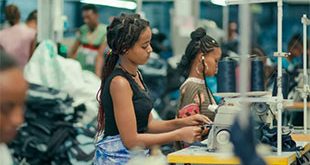“The NRA would never have been able to capture power with 27 guns if its nucleus of leaders did not embody the virtue of prioritisation within resource constraints,” Museveni says in the book’s preface.
To kick-start UPE, the government had to revise its funding priorities away from tertiary education to primary education.
Today, the primary school subsector takes the lion’s share of the education budget, which in FY2016/17 was Shs2.47 trillion or 11 percent of the national budget of Shs18.3 trillion. By comparison, a year after UPE had begun (that is FY1998/99) the education sector’s allocation was Shs403 billion out of Shs1.5 trillion.
“It means that in [FY]2016/17 when UPE clocked 20 years, the education sector was being allocated more money than the entire national budget when the programme was a year old,” Museveni says.
The money has gone into the welfare of teachers, school infrastructure and to some extent instructional materials. Science teachers and those in hard-to-reach areas are entitled to a 30 percent top up over their salary.
In infrastructural terms, there are over 160,000 classrooms compared to 45,000 that existed at the start of UPE in 1997. Additionally, there has been a scaling-up of libraries and latrines. This has reshaped pupil-classroom and pupil-teacher ratios to 69:1 and 54:1 respectively. The target is 45:1 pupil-classroom ratio.
Another 138 primary schools have been planned through the Uganda Teacher and School Effectiveness Project. Each of the schools will get seven classrooms, one administration block, two blocks of five-stance latrines for boys and girls, and one block of two-stance latrines for teachers.
UPE has had impact outside beyond the schools. The work on infrastructure has been monopolised by Ugandan companies, putting money in thousands of households and improving lives.
But the poor grades of UPE pupils in PLE and the high dropout rates expose the teething challenge that led to neglect of quality as focus went to getting every child to school. Out of the 476,130 pupils who sat exams in 2018, only 38,148 (or 6.6 percent) passed in Division One. Both numbers are tiny fractions of those who started out in P.1 as many fell off.
The government does not hide its head in the sand over these problems. Permanent Secretary Alex Kakooza, says the Ministry of Education is focused on raising the quality of learning. The Education Sector Strategic Plan has identified interventions such as increasing teacher numbers, training them, improving their welfare, supplying more and better instructional materials, and construction of more schools.
****
 The Independent Uganda: You get the Truth we Pay the Price
The Independent Uganda: You get the Truth we Pay the Price



